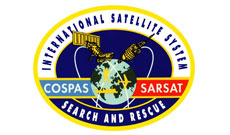NESDIS IIAD works with many international coordination organizations to make sure that global investments in satellite and in situ observations are interoperable and made in the most efficient way possible.
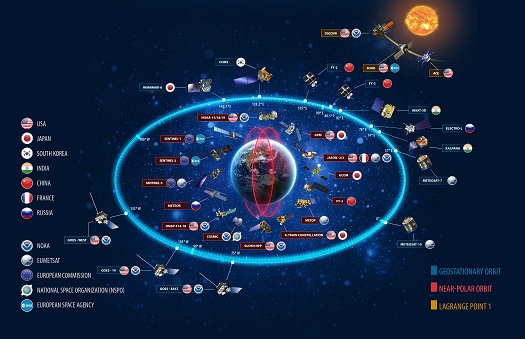 Current space-based portion of the WMO's Global Observing System, plus additional space weather and environmental satellites. Click here for a full-resolution version.
Current space-based portion of the WMO's Global Observing System, plus additional space weather and environmental satellites. Click here for a full-resolution version.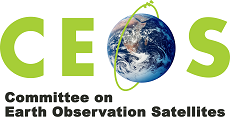
CEOS
The Committee on Earth Observation Satellites was established in 1984 under the auspices of the G-7 Economic Summit of Industrialized Nations and is the focal point for international coordination of space-related Earth observation activities. Its mission is to ensure coordination of civil space-based Earth observation programs and to promote exchange of data to optimize societal benefit and to inform decision making for securing a prosperous and sustainable future. CEOS operates through best efforts of Members and Associates via voluntary contributions. CEOS has 31 Members (Space Agencies) and 28 Associates (UN Agencies, Phase A programs or supporting ground facility programs). NOAA is currently the Vice Chair of the CEOS Strategic Implementation Team (SIT). Contact: Kerry Sawyer.
GEO
The Group on Earth Observations is coordinating international efforts to build a Global Earth Observation System of Systems (GEOSS). This emerging public infrastructure is interconnecting a diverse and growing array of instruments and systems for monitoring and forecasting changes in the global environment. This “system of systems” supports policymakers, resource managers, science researchers and many other experts and decision-makers. GEO is a voluntary partnership of governments and international organizations. Contact: Yana Gevorgyan.
CGMS
The Coordination Group for Meteorological Satellites (CGMS) began in 1972 and provides an international forum for the exchange of technical information on geostationary and polar-orbiting meteorological satellites. Original members included the European Space Research Organization, JAXA, NOAA, observers from the WMO and the Joint Planning Staff for the Global Atmosphere Research Program. Since then, CGMS has expanded to 15 space agencies and the WMO. Primary objectives include to 1) provide a forum for technical exchange on meteorological satellite systems, 2) coordinate missions, including establishing complementary orbits, sensors, data formats, and downlink frequencies, and 3) encourage mutual backup arrangements. Contact: Matthew Butler.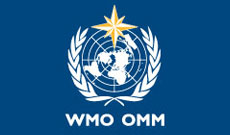
WMO
With 188 member states and territories, the World Meteorological Organization is a specialized agency of the United Nations focused on the Earth's atmosphere, its interaction with the oceans, the climate it produces and the resulting distribution of water resources. The WMO Space Programme coordinates environmental satellite matters and activities throughout all WMO Programs and provides guidance on the potential of remote-sensing techniques in meteorology, hydrology and related disciplines and applications. Through NESDIS, NOAA maintains an active relationship with the WMO Space Program Office and provides advice and guidance on policy-related matters, including the optimization of international space-based earth observing capabilities. Contact: Mary Ann Kutny.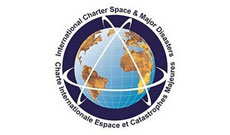
International Charter "Space and Major Disasters"
The International Charter "Space and Major Disasters" ("The International Charter") was initiated at the UNISPACE III conference in Vienna in 1999. The International Charter's goal is to provide a unified system of space data acquisition and delivery to those affected by natural or technological disasters. With 15 members today, the International Charter provides rapid access to satellite data for the benefit of disaster management authorities during the response phase of the disaster cycle. The International Charter is uniquely able to mobilize the resources of its members in response to an emergency call through a single access point that operates 24 hours a day, 7 days a week at no cost to the Authorized User. Contact: Kerry Sawyer.